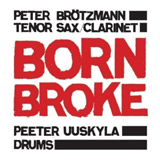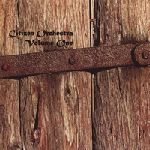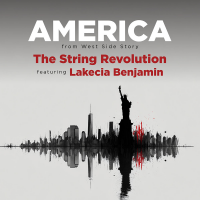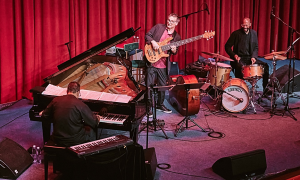Home » Jazz Articles » Profile » Reuben Radding: More Than Just a Free Jazzer
Reuben Radding: More Than Just a Free Jazzer
A lot of listeners only know my records with Daniel Carter and they assume I
 A low trilling crescendo, replete with harmonics, a sharp rise and sudden plummet as one of those upper partials is tossed off a cliff and fades into the distance. Yet, after a brief pause and in the very next gesture, it returns to create a triumphant major third. Such pithy compactness is typical of bassist/composer Reuben Radding's approach to music making. His free playing usually combines US grit and power with an always fascinating and detailed sense of European formal structure; nowhere is this more apparent than on the first two gestures of Reuben Radding Solo: Live in Rochester, his twelfth free album-length download of 2007, all currently available on Radding's website.
A low trilling crescendo, replete with harmonics, a sharp rise and sudden plummet as one of those upper partials is tossed off a cliff and fades into the distance. Yet, after a brief pause and in the very next gesture, it returns to create a triumphant major third. Such pithy compactness is typical of bassist/composer Reuben Radding's approach to music making. His free playing usually combines US grit and power with an always fascinating and detailed sense of European formal structure; nowhere is this more apparent than on the first two gestures of Reuben Radding Solo: Live in Rochester, his twelfth free album-length download of 2007, all currently available on Radding's website."I just turned forty at the end of 2006, Radding explains. "I wanted to celebrate, but I also wanted to do something that would be a challenge to me, that would up the ante. There is, of course, a practical element to the Twelve Months project, one that is almost inseparable from its more intangible aspects. "I'm in the fortunate position to have the means of production. I have Studio STATS [in Brooklyn], I have the website and I have the playing partners.
It is a fine list of partners indeed, including contributions from Harris Eisenstadt, Damon Smith, Weasel Walter and, perhaps above all, Nate Wooley and Jack Wright. Each appears on a quarter of the collaborative efforts that make up the twelve downloads, and they represent two of Radding's longest-lasting partnerships to date. "I have been in so many different groups with Nate, says Radding, "including one with Mary Halvorson, and we're putting out a record on hatART. Nate's also one of my closest friends. I always feel great playing with him. Jack—well, he's been around playing free music for an eternity. He's simply one of the most long-standing American free improvisers alive and it is a complete joy to play with him. 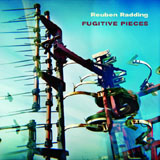
The bass, first electric then acoustic, would come later, after the guitar and much in the way of immersion in many musical genres. He looks back on his background with gratitude and with a bit of awe. "I find it amazing now just how much I was exposed to at the time—family meetings with Leonard Bernstein and Christopher Hogwood, who came over and played our piano. At the time though, classical music was more a thing to rebel against than to embrace.
Radding's musical upbringing in Arlington, Virginia prepared him for a career in improvisation and composition in ways he could never have imagined, fostered by a ceaseless curiosity. It was never enough for him just to hear one album by a beloved musician; he would then read voraciously about every aspect of that player's biography and influences. So it was that through The Beatles, he came to John McLaughlin and then to John Coltrane, purchasing the fiercely experimental Om (Impulse!, 1965). "Yeah, that was my first jazz record, Radding laughs.
He then played in some rock bands, notably one called Dain Brammage, now known as the group that spawned Dave Grohl, future Nirvana drummer. A real interest in contemporary classical music began to emerge, but even monster leaps like Om and Krystof Penderecki did not prepare Radding for the way his musical life exploded into multi-focus when he moved to Brooklyn in 1988. There, he began to form the relationships that would foster his creativity, allowing new levels of musical awareness to be reached.
Of his formative influences, Mark Dresser obviously holds pride of place. Radding came to Dresser through exposure to Anthony Braxton's stunning 1980s quartet with Dresser, Gerry Hemingway and Marilyn Crispell and through an association with Elliott Sharp, Dresser became Radding's teacher. "His influence is so fundamental to what I do now, right down to my posture when I play; that's how we spent most of our first lesson, getting my posture right. I just can't say enough about how formative my experience studying with him was. 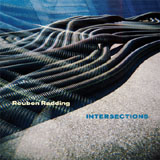
It is not surprising that many of the cast that makes up the Twelve Months project will be present in January, 2008, when Radding curates the Free Style Creative Music Series at Jimmy's in New York City. He is not overly pleased that many places in New York are adopting monthly curated schedules, but at the same time, he sees January as a wonderful opportunity to present his work and that of his friends. "I don't like the monthly curator trend, as it makes it very difficult even for those of us who live here to set up gigs when our collaborators are available, but even so, how could I refuse such a good opportunity?
Despite these misgivings, Radding is absolutely positive about New York and the scene in which he's so deeply involved. Having spent time away, five of those years being spent in Seattle, he is well aware of the many benefits of New York musical life. "I came back in 2002, because if I'd stayed in Seattle, I don't think my playing would have changed. I need to be challenged and New York is simply one of the best places in the world to be, for so many reasons. Radding has certainly made the most of every musical situation and the twelve downloads of 2007 sum up the vast scope of his accomplishments.
Selected Discography
Reuben Radding, Intersections (Pine Ear Music, 2005)
Reuben Radding, Fugitive Pieces (Pine Ear Music, 2005)
Carrie Shull/Tara Flandreau/Reuben Radding, The Branch Will Not Break (Umbrella, 2004)
Ursel Schlicht/Reuben Radding, Einstein's Dreams (Konnex, 2004)
Wally Shoup/Gust Burns/Reuben Radding/Greg Campbell, The Levitation Shuffle (Clean Feed, 2003)
Daniel Carter/Reuben Radding, Luminescence (Aum Fidelity, 2001)
Photo Credit
Peter Gannushkin, courtesy of Downtown Music
Tags
PREVIOUS / NEXT
Support All About Jazz
 All About Jazz has been a pillar of jazz since 1995, championing it as an art form and, more importantly, supporting the musicians who make it. Our enduring commitment has made "AAJ" one of the most culturally important websites of its kind, read by hundreds of thousands of fans, musicians and industry figures every month.
All About Jazz has been a pillar of jazz since 1995, championing it as an art form and, more importantly, supporting the musicians who make it. Our enduring commitment has made "AAJ" one of the most culturally important websites of its kind, read by hundreds of thousands of fans, musicians and industry figures every month.


